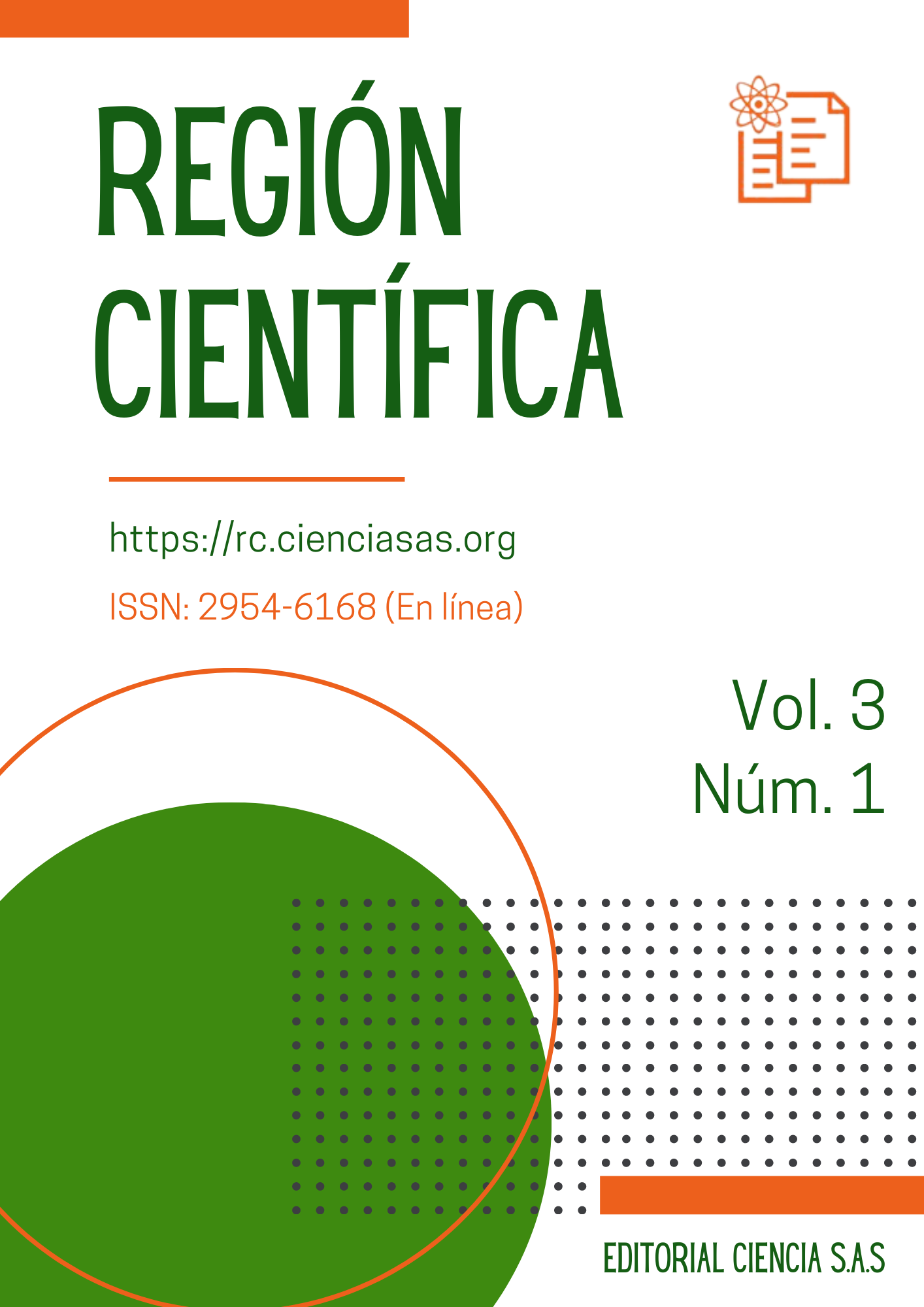La herramienta Jamboard en la mejora de las exposiciones virtuales universitarias
DOI:
https://doi.org/10.58763/rc2024256Palabras clave:
Comunicación, comunicación en grupo, tecnología de la información, tecnología educacionalResumen
El estudio tuvo como finalidad poder evaluar el uso de la pizarra virtual Jamboard en las exposiciones virtuales con estudiantes universitarios. La investigación se ejecutó mediante un estudio pre-experimental con diseño de pre-test y post-test, en una muestra de 102 estudiantes de la Universidad Nacional de la Amazonia Peruana. Las técnicas e instrumentos utilizados en la investigación fueron la encuesta, el cuestionario y la observación directa con un protocolo de recabado de datos. Los resultados más relevantes, en la evaluación de las exposiciones virtuales sin el uso de Jamboard, fue un bajo porcentaje de estudiantes que hizo un trabajo calificado como bueno, mientras que al aplicar el empleo del Jamboard como estrategia, este porcentaje subió considerablemente. El estudio permitió concluir que el uso del Jamboard como instrumento para perfeccionar las presentaciones en el contexto universitario es un indicador de calidad en la ejecución de las exposiciones virtuales y contribuye a la mejora de las estas.
Métricas
Citas
Abdelrahman, R. (2020). Metacognitive awareness and academic motivation and their impact on academic achievement of Ajman University students. Heliyon, 6(9), e04192. https://doi.org/10.1016/j.heliyon.2020.e04192
Aina, C., Baici, E., Casalone, G., y Pastore, F. (2022). The determinants of university dropout: A review of the socio-economic literature. Socio-Economic Planning Sciences, 79, 101102. https://doi.org/10.1016/j.seps.2021.101102
Ajjawi, R., Dracup, M., Zacharias, N., Bennett, S., y Boud, D. (2020). Persisting students’ explanations of and emotional responses to academic failure. Higher Education Research & Development, 39(2), 185–199. https://doi.org/10.1080/07294360.2019.1664999
Akram, H., Yingxiu, Y., Al-Adwan, A., y Alkhalifah, A. (2021). Technology Integration in Higher Education During COVID-19: An Assessment of Online Teaching Competencies Through Technological Pedagogical Content Knowledge Model. Frontiers in Psychology, 12, 736522. https://doi.org/10.3389/fpsyg.2021.736522
Alvarez, A., Teeters, L., Penuel, W., y Esteban-Guitart, M. (2023). Considerations to engage a funds of identity approach as a vehicle toward epistemic justice in educational settings. Learning, Culture and Social Interaction, 40, 100718. https://doi.org/10.1016/j.lcsi.2023.100718
Alvarez-Risco, A., Del-Aguila-Arcentales, S., Rosen, M., y Yáñez, J. (2022). Social Cognitive Theory to Assess the Intention to Participate in the Facebook Metaverse by Citizens in Peru during the COVID-19 Pandemic. Journal of Open Innovation: Technology, Market, and Complexity, 8(3), 142. https://doi.org/10.3390/joitmc8030142
Arias, R., y Mejía, J. (2021). Knowledge management in two universities before and during the COVID-19 effect in Peru. Technology in Society, 64, 101479. https://doi.org/10.1016/j.techsoc.2020.101479A
Arrieta, M., y Avolio, B. (2020). Factors of higher education quality service: The case of a Peruvian university. Quality Assurance in Education, 28(4), 219–238. https://doi.org/10.1108/QAE-03-2020-0037
Austin, T. (2022). Linguistic imperialism: Countering anti Black racism in world language teacher preparation. Journal for Multicultural Education, 16(3), 246–258. https://doi.org/10.1108/JME-12-2021-0234
Ayob, H., Daleure, G., Solovieva, N., Minhas, W., y White, T. (2023). The effectiveness of using blended learning teaching and learning strategy to develop students’ performance at higher education. Journal of Applied Research in Higher Education, 15(3), 650–662. https://doi.org/10.1108/JARHE-09-2020-0288
Bizami, N., Tasir, Z., y Kew, S. (2023). Innovative pedagogical principles and technological tools capabilities for immersive blended learning: A systematic literature review. Education and Information Technologies, 28(2), 1373–1425. https://doi.org/10.1007/s10639-022-11243-w
Bruggeman, B., Tondeur, J., Struyven, K., … y Vanslambrouck, S. (2021). Experts speaking: Crucial teacher attributes for implementing blended learning in higher education. The Internet and Higher Education, 48, 100772. https://doi.org/10.1016/j.iheduc.2020.100772
Buck-Pavlick, H. (2022). Empowering Metacognition Through Dance Writing and Collaborative Dance Making. Journal of Dance Education, 1–11. https://doi.org/10.1080/15290824.2022.2051041
Castéra, J., Marre, C., Yok, M., … y Armand, H. (2020). Self-reported TPACK of teacher educators across six countries in Asia and Europe. Education and Information Technologies, 25(4), 3003–3019. https://doi.org/10.1007/s10639-020-10106-6
Cavalcanti-Bandos, M., Quispe-Prieto, S., Paucar-Caceres, A., Burrowes-Cromwel, T., y Rojas-Jiménez, H. (2021). Provision of education for sustainability development and sustainability literacy in business programs in three higher education institutions in Brazil, Colombia and Peru. International Journal of Sustainability in Higher Education, 22(5), 1055–1086. https://doi.org/10.1108/IJSHE-07-2020-0247
De Obesso, M., Núñez-Canal, M., y Pérez-Rivero, C. (2023). How do students perceive educators’ digital competence in higher education? Technological Forecasting and Social Change, 188, 122284. https://doi.org/10.1016/j.techfore.2022.122284
De Oliveira, C., Sobral, S., Ferreira, M., y Moreira, F. (2021). How Does Learning Analytics Contribute to Prevent Students’ Dropout in Higher Education: A Systematic Literature Review. Big Data and Cognitive Computing, 5(4), 64. https://doi.org/10.3390/bdcc5040064
Figueroa, M., y Shawgo, K. (2022). “You can’t read your way out of racism”: Creating anti-racist action out of education in an academic library. Reference Services Review, 50(1), 25–39. https://doi.org/10.1108/RSR-06-2021-0025
Hämäläinen, R., Nissinen, K., Mannonen, J., … y Taajamo, M. (2021). Understanding teaching professionals’ digital competence: What do PIAAC and TALIS reveal about technology-related skills, attitudes, and knowledge? Computers in Human Behavior, 117, 106672. https://doi.org/10.1016/j.chb.2020.106672
Ipanaqué-Zapata, M., Figueroa-Quiñones, J., Bazalar-Palacios, J., … y Villarreal-Zegarra, D. (2023). Research skills for university students’ thesis in E-learning: Scale development and validation in Peru. Heliyon, 9(3), e13770. https://doi.org/10.1016/j.heliyon.2023.e13770
Karlin, M., Liao, Y.-C., y Mehta, S. (2023). Exploring computer science understanding and rationales in preservice teacher pathways through faculty professional development. Journal of Research on Technology in Education, 1–15. https://doi.org/10.1080/15391523.2023.2174623
Kirby, E., Tolstikov-Mast, Y., y Walker, J. (2020). Retention challenges for indigenous Peruvian college students on Beca 18 scholarship and strategies to improve their experiences and academic success. Diaspora, Indigenous, and Minority Education, 14(3), 162–176. https://doi.org/10.1080/15595692.2020.1740980
Kong, F., Zhao, L., y Tsai, C.-H. (2020). The Relationship Between Entrepreneurial Intention and Action: The Effects of Fear of Failure and Role Model. Frontiers in Psychology, 11, 229. https://doi.org/10.3389/fpsyg.2020.00229
Livy, S., Muir, T., Murphy, C., y Trimble, A. (2022). Creative approaches to teaching mathematics education with online tools during COVID-19. International Journal of Mathematical Education in Science and Technology, 53(3), 573–581. https://doi.org/10.1080/0020739X.2021.1988742
Lor, M., Yang, N., Backonja, U., y Bakken, S. (2023). Evaluating and refining a pain quality information visualization tool with patients and interpreters to facilitate pain assessment in primary care settings. Informatics for Health and Social Care, 48(4), 353–369. https://doi.org/10.1080/17538157.2023.2240411
Maqableh, M., y Alia, M. (2021). Evaluation online learning of undergraduate students under lockdown amidst COVID-19 Pandemic: The online learning experience and students’ satisfaction. Children and Youth Services Review, 128, 106160. https://doi.org/10.1016/j.childyouth.2021.106160
McComb, C., Leonard, N., Letts, … y Zaszlavik, K. (2022). Zooming Support: Stories of How a Pandemic and SAMR Improved Preservice Art Education Instruction. Art Education, 75(1), 42–48. https://doi.org/10.1080/00043125.2021.1987830
Podsiadlik, A. (2023). The Blended Learning Experiences Of Students With Specific Learning Difficulties: A Qualitative Case Study Located In One British Higher Education Institution. International Journal of Disability, Development and Education, 70(3), 366–381. https://doi.org/10.1080/1034912X.2021.1876217
Ríos, J., Matas-Terron, A., Rumiche, R., y Chunga, G. (2021). Scale for Measuring Phubbing in Peruvian University Students: Adaptation, Validation and Results of Its Application. Journal of New Approaches in Educational Research, 10(2), 175. https://doi.org/10.7821/naer.2021.7.606
Roman, T., Brantley-Dias, L., Dias, M., y Edwards, B. (2022). Addressing student engagement during COVID-19: Secondary STEM teachers attend to the affective dimension of learner needs. Journal of Research on Technology in Education, 54(sup1), S65–S93. https://doi.org/10.1080/15391523.2021.1920519
Rosli, M., y Saleh, N. (2023). Technology enhanced learning acceptance among university students during Covid-19: Integrating the full spectrum of Self-Determination Theory and self-efficacy into the Technology Acceptance Model. Current Psychology, 42(21), 18212–18231. https://doi.org/10.1007/s12144-022-02996-1
Rubach, C., y Lazarides, R. (2021). Addressing 21st-century digital skills in schools – Development and validation of an instrument to measure teachers’ basic ICT competence beliefs. Computers in Human Behavior, 118, 106636. https://doi.org/10.1016/j.chb.2020.106636
Sheldon, E., Simmonds-Buckley, M., Bone, C., … y Barkham, M. (2021). Prevalence and risk factors for mental health problems in university undergraduate students: A systematic review with meta-analysis. Journal of Affective Disorders, 287, 282–292. https://doi.org/10.1016/j.jad.2021.03.054
Starkey, L. (2020). A review of research exploring teacher preparation for the digital age. Cambridge Journal of Education, 50(1), 37–56. https://doi.org/10.1080/0305764X.2019.1625867
Sullivan, P. (2022). Leveraging the power of Google Apps to support active learning in a synchronous online environment. International Journal of Mathematical Education in Science and Technology, 53(3), 610–618. https://doi.org/10.1080/0020739X.2021.1994159
Szymkowiak, A., Melović, B., Dabić, M., Jeganathan, K., y Kundi, G. (2021). Information technology and Gen Z: The role of teachers, the internet, and technology in the education of young people. Technology in Society, 65, 101565.
Tan, L., Kubota, K., Tan, J., Kiew, P., y Okano, T. (2022). Learning first principles theories under digital divide: Effects of virtual cooperative approach on the motivation of learning. Education for Chemical Engineers, 40, 29–36. https://doi.org/10.1016/j.ece.2022.04.003
Truss, A., y Anderson, V. (2023). The navigational challenges of a blended learning approach to teaching in business and management. The International Journal of Management Education, 21(1), 100733. https://doi.org/10.1016/j.ijme.2022.100733
VanLangen, K., Begley, K., Bradley, C., … y Frenzel, J. (2023). Early skills laboratory warnings: Laboratory faculty perspectives on student barriers for progression to experiential education. Currents in Pharmacy Teaching and Learning, 15(6), 568–572. https://doi.org/10.1016/j.cptl.2023.06.004
Yang, H., Cai, J., Yang, H., y Wang, X. (2023). Examining key factors of beginner’s continuance intention in blended learning in higher education. Journal of Computing in Higher Education, 35(1), 126–143. https://doi.org/10.1007/s12528-022-09322-5
Descargas
Publicado
Cómo citar
Número
Sección
Licencia
Derechos de autor 2024 Susy Karina Dávila Panduro, Guillermo Dávila Arbaiza, Carlos Antonio Li Loo Kung

Esta obra está bajo una licencia internacional Creative Commons Atribución-NoComercial-CompartirIgual 4.0.
Este artículo se distribuye bajo la licencia Creative CommonsReconocimiento-NoComercial-CompartirIgual 4.0 Internacional. A menos que se indique lo contrario, el material publicado asociado se distribuye bajo la misma licencia.












